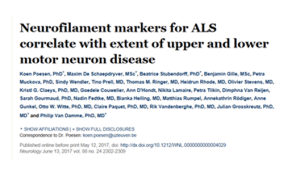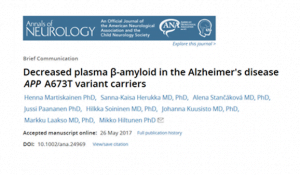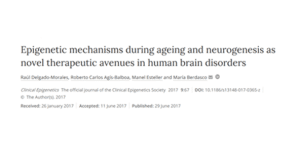In experiments with a protein called Ephexin5 that appears to be elevated in the brain cells of Alzheimer’s disease patients and mouse models of the disease, researchers show that removing it prevents animals from developing Alzheimer’s characteristic memory losses. In a report on the studies, published in The Journal of Clinical Investigation, the researchers say the findings could eventually advance the development of drugs that target Ephexin5 to prevent or treat symptoms of the disorder.
Curious about whether Ephexin5 — a protein regulated by the protein EphB2 and thought to be responsible for inhibiting the development of dendritic spines — might play an important role in Alzheimer’s disease symptoms, researchers first investigated whether this protein might be poorly regulated in Alzheimer’s animal models and patients.
The researchers discovered that when they added amyloid beta to healthy mouse brain cells growing in petri dishes, these cells began overproducing Ephexin5. Additionally, when they injected the brains of healthy mice with amyloid beta, cells there also began overproducing Ephexin5 — both clues that the protein that makes Alzheimer’s characteristic plaques appears to trigger an increase in brain cells’ production of Ephexin5 of between 1- and 2.5-fold.
When the researchers examined preserved brain tissues isolated from Alzheimer’s patients during autopsies, they also found similarly high levels of Ephexin5. Additionally, they found elevated levels of Ephexin5 in mice genetically engineered to overproduce amyloid beta, and that show memory deficits similar to those with human Alzheimer’s disease, further confirming that excess Ephexin5 is associated with this disease.
Armed with what they called this wealth of evidence that brain cells produce too much Ephexin5 when Alzheimer’s disease linked to amyloid beta is present, the researchers then investigated whether reducing Ephexin5 might prevent Alzheimer’s deficits.
Using genetic engineering techniques that knocked out the gene that makes Ephexin5, the researchers developed mouse Alzheimer’s disease models whose brain cells could not produce the protein. Although the animals still developed the characteristic Alzheimer’s amyloid plaques, they didn’t lose excitatory synapses, retaining the same number as healthy animals as they aged.
To see whether this retention of excitatory synapses in turn affected behavior related to memory tasks, the researchers trained healthy mice, mouse models of Alzheimer’s and Alzheimer’s models genetically engineered to lack Ephexin5 in two learning tasks: one that involved the ability to distinguish objects that had moved upon subsequent visits to the same chamber, and another that involved the ability to avoid chambers where they’d previously received a small electric shock.
While the typical Alzheimer’s disease model mice appeared unable to remember the moved objects or the shocks, the Alzheimer’s animals genetically engineered to be Ephexin5-free performed as well as healthy animals on the two tasks.
The researchers caution that while the results all suggest removing Ephexin5 prevented Alzheimer’s disease-associated impairments, they don’t on their own provide a true test for the approach to treatment. That’s because in people with Alzheimer’s disease, the brain is exposed to amyloid beta for some time, probably decades, before any treatments might be administered.
To better reflect that human scenario, the researchers raised mouse models for Alzheimer’s disease into adulthood — allowing their brains to be exposed to excess amyloid beta for weeks — before injecting their brains with a short piece of genetic material that shut down Ephexin5 production. These mice performed just as well on the memory tasks as the healthy mice and those genetically engineered to produce no Ephexin5.
Together, these results suggest that too much Ephexin5 triggered by amyloid beta and reduced EphB2 signaling might be the reason why Alzheimer’s disease patients gradually lose their excitatory synapses, leading to memory loss — and that shutting down Ephexin5 production could slow or halt the disease.
Paper: “Reducing expression of synapse-restricting protein Ephexin5 ameliorates Alzheimer’s-like impairment in mice”
Reprinted from materials provided by Johns Hopkins Medicine.




